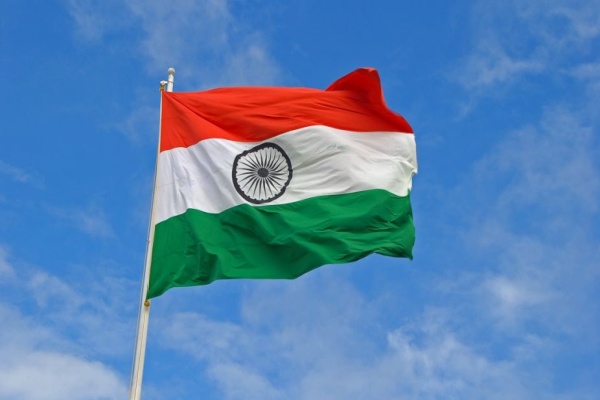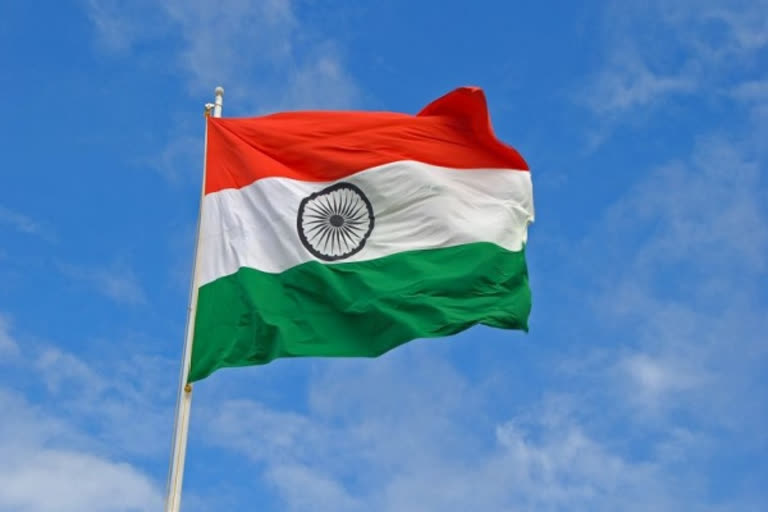Hyderabad: Every free nation of the world has its flag. It is a symbol of a free country. The National flag of India is a horizontal tricolour of deep saffron(Kesari) at the top, white in the middle and dark green at the bottom in equal proportion. In the centre of the white band is a navy-blue wheel with 24 spokes, which represents the chakra. Its design is that of the wheel which appears on the abacus of the Lion Capital of Ashoka at Sarnath.
National Flag Adoption Day is celebrated on the 22nd July every year to commemorate the adoption of the tricolour of the Indian National flag on 22nd July 1947. Through the celebration of National flag adoption day, we rememorize the adoption day of our national flag, the significance of our national flag, pay hearty salute, honour and respect as well as lead the Indian cultures and traditions to our new generations.
Tricolour of the Indian national flag was adopted to represent the true meaning of patriotism as well as spreading true essence and energy among the Indian people especially youths and future generations. There is another importance of celebrating the National Flag Adoption Day: to make the people aware of the value of the Indian National Flag and know the History of the Indian Flag.
History of the Indian National Flag Adoption Day
The Indian National Flag, designed by Pingali Venkayya, was first adopted by the Indian constitution assembly in a meeting of 22nd July in the year 1947, which is why this day is celebrated every year since 1947 all over India as the "Indian National Flag Adoption Day". The present form of the national flag came into power when it was officially declared as an "official flag of the Dominion of India" in the meeting of Constitution Assembly.
Evolution of our National Flag

First Flag: The first national flag in India is said to have been hoisted on August 7, 1906, in the Parsee Bagan Square (Green Park) in Calcutta now Kolkata. The flag was composed of three horizontal strip red, yellow and green.

Second Flag: Called the 'Saptarishi Flag', this was hoisted in Stuttgart at the International Socialist Congress held on August 22, 1907.

Third Flag: The third flag went up in 1917 when our political struggle had taken a definite turn. Dr Annie Besant and Lokmanya Tilak hoisted it during the home rule movement. This flag had five red and four green horizontal strips arranged alternately, with seven stars in the saptarishi configuration super-imposed on them. In the left-hand top corner (the pole end) was the Union Jack. There was also a white crescent and star in one corner.

Fourth Flag: During the session of the All India Congress Committee which met at Bezwada in 1921 (now Vijayawada) an Andhra youth prepared a flag and took it to Gandhiji. It was made up of two colours - red and green - representing the two major communities, i.e., Hindus and Muslims. Gandhi suggested the addition of a white strip to represent the remaining communities of India and the spinning wheel to symbolize progress of the Nation.

Fifth Flag: The year 1931 was a landmark in the history of the flag. A resolution was passed adopting a tricolour flag as our national flag. This flag, the forbear of the present one, was saffron, white and green with Mahatma Gandhi's spinning wheel at the centre. It was, however, clearly stated that it bore no communal significance and was to be interpreted thus.

The Present Flag (The Tiranga): On July 22, 1947, the Constituent Assembly adopted it as Free India National Flag. After the advent of Independence, the colours and their significance remained the same. Only the Dharma Chakra of Emperor Asoka was adopted in place of the spinning wheel as the emblem on the flag. Thus, the tricolour flag of the Congress Party eventually became the tricolour flag of Independent India.
Elements of the National Flag
The First Band (Saffron): Indicating the strength and courage of the country.
The Second Band (White): Indicates peace and truth with Dharma Chakra which has 24 spokes.
The Wheel (Chakra): The 'Dharma chakra' depicted the "wheel of the Law" in the Sarnath Lion Capital made by the 3rd century BC Mauryan Emperor Ashoka. The Chakra intends to show that there is life in movement and death in stagnation.
The 24 spokes meaning - Love, Patience, Magnanimity, Faithfulness, Self lessness, Self Sacrifice, Righteousness, Mercy, Humility, Sympathy, MoralValues, Fear of God, Faith/Hope, Believe, Spiritual, Empathy, Gracefulness, Justice, Truthfulness, Self-Control, Gentleness, Peacefulness, Goodness, Courage.
The Third Band (Green): It shows the fertility, growth and auspiciousness of the land.
Some interesting facts about the Indian flag
· The Indian flag was hoisted on the highest mountain peak of the world, Mount Everest on 29th May 1953.
· Madam Bhikaji Rustom Cama was the first person to hoist flag on foreign soil on 22nd August 1907 in Stuttgart, Germany.
· The Indian National Flag flew to space in 1984 when WingCommander Rakesh Sharma went to space. The flag was attached as a medallion on the spacesuit of Rakesh Sharma. (Rakesh Sharma went into space as the first Indian astronaut)



